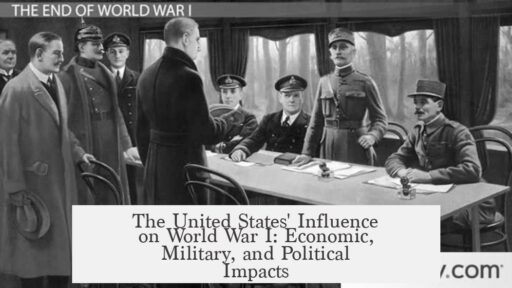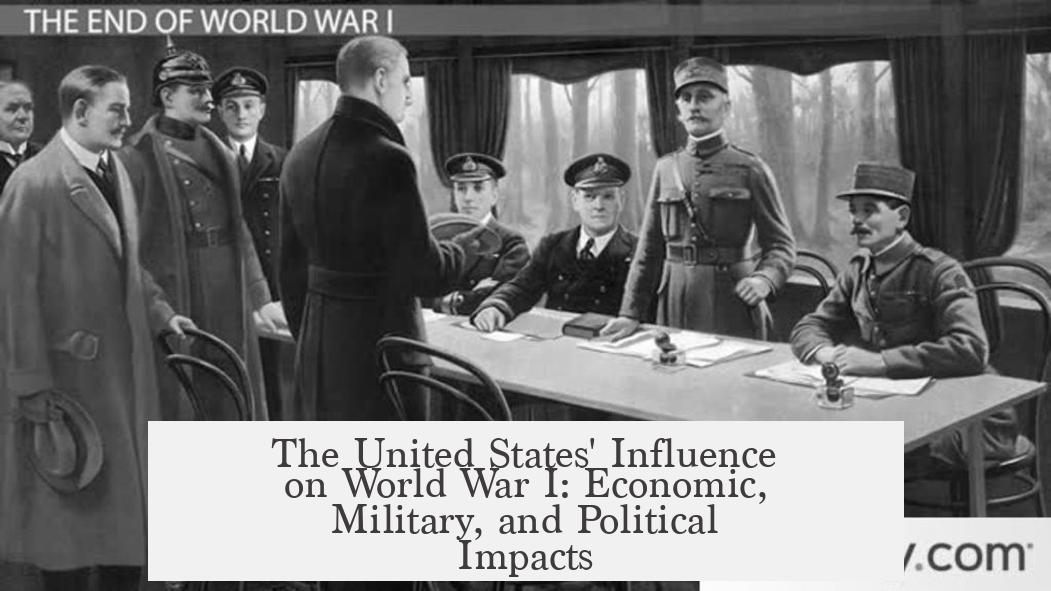The United States had a profound impact on World War I, primarily through massive economic support, financial credit, and material supplies that sustained the Allied powers. Although American troops arrived late and engaged in combat only briefly, the economic contributions and the looming threat of fresh American forces significantly influenced the war’s outcome and German strategy.
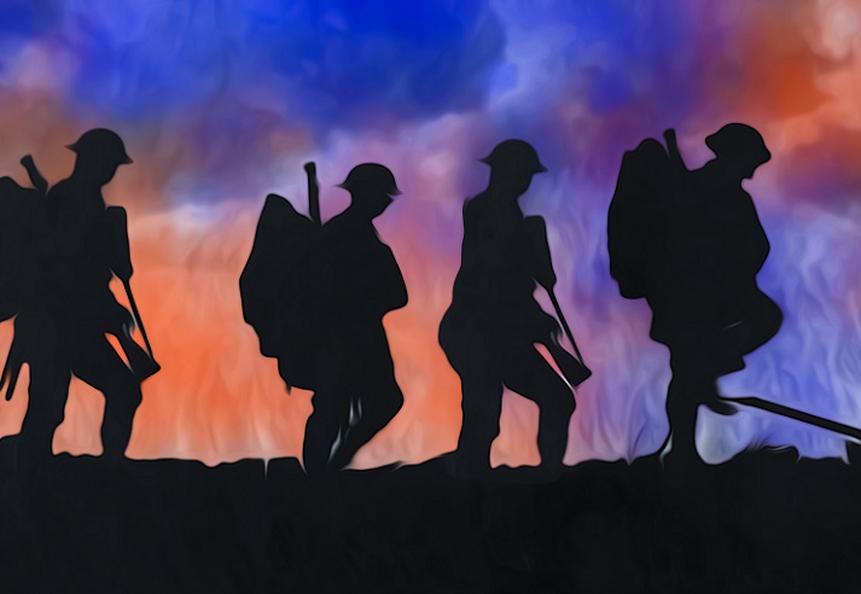
The US entry into the war in April 1917 marked a turning point but did not immediately translate into large-scale combat on European battlefields. Early in the conflict, American industry played a critical role supporting Britain and France. Wartime trade between the US and Allied countries tripled, while trade with Germany was halted due to the British naval blockade. The blockade severely limited German access to vital materials, strangling German production. American shipments of agricultural products like grain, beef, and munitions greatly bolstered the Allies’ capacity to continue fighting.
Financially, the United States also became the principal lender to the Allies. Before its official war entry, British and French governments borrowed heavily on Wall Street, with private loans reaching $2 billion by 1916. After joining the war, the US government extended around $4 billion in credit during 1917–1918. This influx of American funds allowed the Allies to purchase increasingly larger quantities of supplies and helped sustain their war economies. The combination of food, munitions, and vast financial support from the US helped offset the war’s enormous costs and contributed to the endurance of the Allied war effort.

American military forces arrived late to the warfront. The American Expeditionary Force (AEF) was fully assembled only by July 1918. By May 1918, about one million American soldiers were in France, but many of them were still training or away from the front lines. American troops missed most of the major German spring offensive in 1918 (the Kaiserschlacht), which depleted German resources. Despite a late entry, American forces suffered heavy casualties—approximately 150,000 killed and 300,000 wounded or sick—during their brief combat involvement.
American soldiers brought a different approach to battle. Unlike their war-weary European counterparts, US troops showed high morale and aggressive spirit, exemplified by officer Daniel Daly’s famous call: “Come on you sons of bitches, do you want to live forever?” However, many American commanders initially used outdated tactics from earlier war years. Even so, the fresh American manpower and enthusiasm bolstered Allied morale.
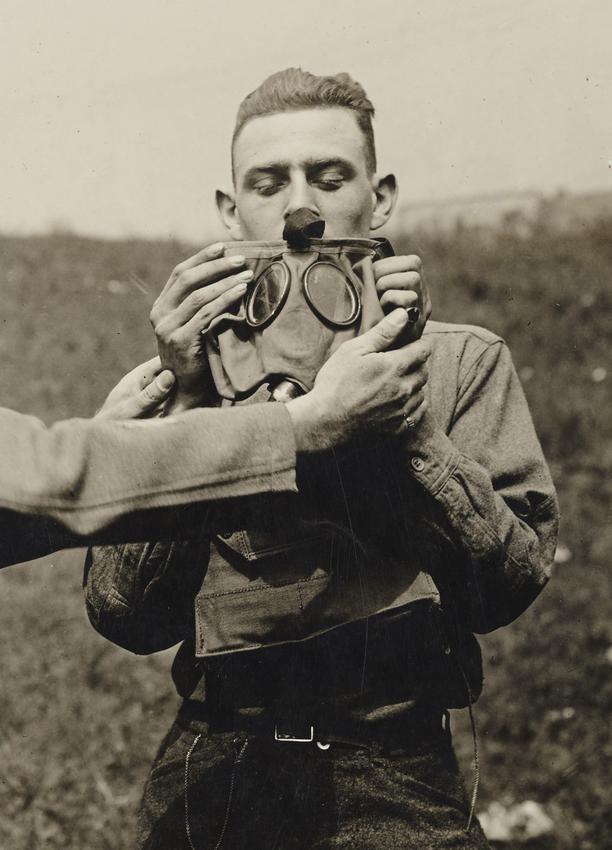
The prospect of the American buildup pressured German leaders and influenced their strategic decisions. Given the blockade’s ongoing effects—causing labor strikes, resource shortages, and naval mutinies—the German war effort was collapsing. The entry of the US raised the stakes, making a prolonged war increasingly untenable for Germany. These pressures contributed to Germany’s willingness to negotiate an armistice by late 1918.
Politically, the United States was initially isolationist. Public opinion was divided, with many Americans reluctant to enter a European war. President Woodrow Wilson’s policy of neutrality was complicated by substantial material support for the Allies. Incidents like the Zimmermann Telegram, in which Germany proposed a military alliance with Mexico, helped shift public sentiment. The US had to implement a draft to build an army, reflecting the lack of volunteer numbers due to widespread war fatigue reported in the press.
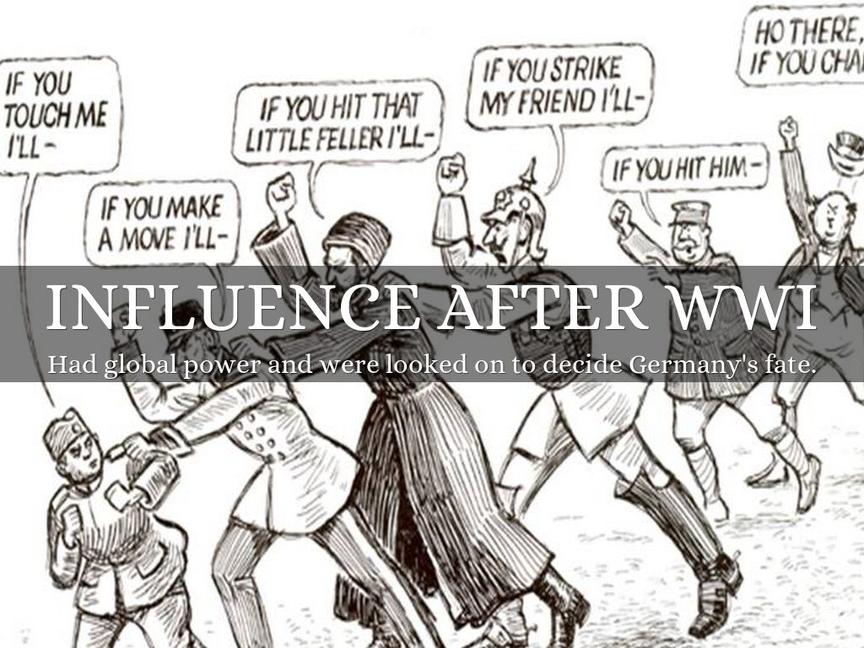
| Aspect | Impact |
|---|---|
| Economic Support | Tripling of trade with Allies, huge food and munitions supplies, crippling German production via blockade |
| Financial Loans | $4 billion government loans 1917-18, large private lending before US entry |
| Military Contribution | Late arrival (mid-1918), significant casualties, morale boost but limited combat duration |
| Strategic Effect | Forced German resource exhaustion, increased Allied morale, pressured German surrender |
| Political Impact | Shift from isolationism, influenced through Zimmermann Telegram, draft implemented for troop buildup |
In summary, the United States shaped World War I through financial strength and industrial capacity that supported the Allies throughout the conflict. The threat posed by arriving American troops hastened the end of hostilities, even though direct combat involvement was relatively brief.
- US economic and financial support was decisive in sustaining the Allied war effort.
- American troops arrived late but brought renewed morale and manpower.
- The British blockade and American trade strangled German industry and resources.
- Strategic pressure from US involvement contributed to German collapse and surrender.
- Political shifts in the US moved the nation from isolationism to active engagement.
What Impact Did the United States Really Have in World War I?
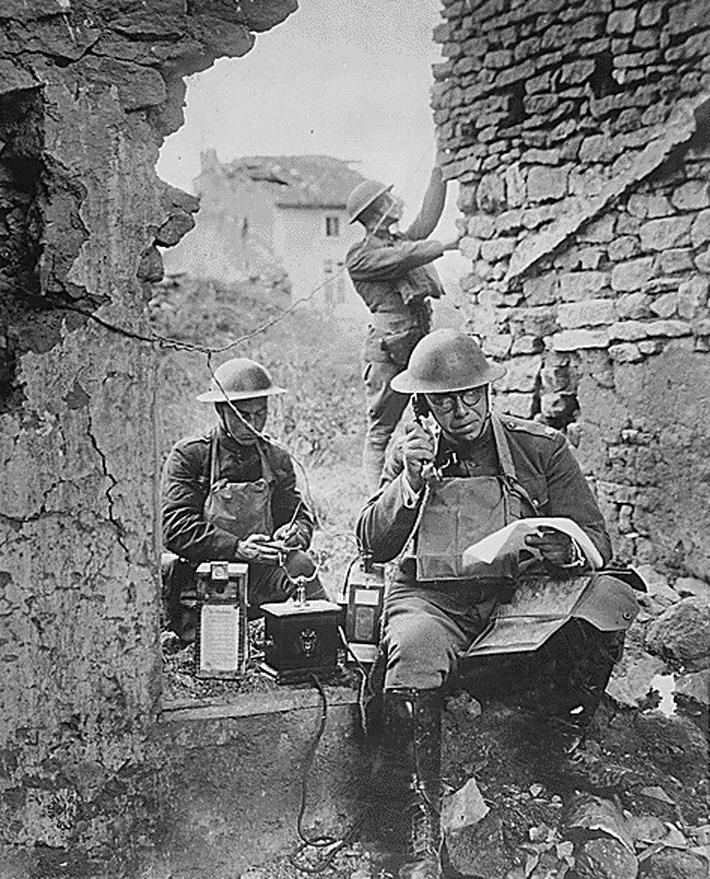
When you think of World War I, the often-pictured image is trenches, European mud, and grim-faced soldiers locked in a brutal stalemate. But what about the United States? Did America really change the game, or was it a latecomer with just a bit-part role? The United States played a crucial, though somewhat nuanced, role—dominated not by battlefield heroics but by massive economic contributions, financial support, and a strategic morale boost that helped tip the scales for the Allies.
Let’s unravel this further, starting with the economic engine.

America’s Economic Power: The Unsung Battlefield
Before the United States ever fired a shot in anger, its factories and farms were already vital pillars propping up Britain and France. Trade between America and the Allies tripled during the war years. In contrast, trade with Germany practically vanished, blocked rigorously by the British naval blockade. This blockade kept German ships from making lucrative, or even necessary, trades.
Here’s a fun tripwire: the goods America sent weren’t flashy tanks or shiny airplanes in WWI—that flashy hero role came in WWII. Instead, the US was the world’s breadbasket and arms supplier. Grain, beef, and tons of ammunition flowed from American heartlands to European frontlines, often before American boots even hit the ground. That’s right—American bank loans and cargo were fighting before American soldiers.
Worth noting: before the US government officially got involved, Britain and France had loans worth billions made via Wall Street, particularly channeled through the JP Morgan banking empire. In 1915 and 1916 alone, billions were funneled into American financial markets to bankroll the war effort.
The Military Footprint: Late but Lethal
Come 1918, over a million Americans were in France, but don’t expect all of them to have hit the front at once. Many were still training or positioned away from battle zones. The American Expeditionary Force (AEF) only officially took form in July 1918—fairly late in the war.
The intense German spring offensive, known as the Kaiserschlacht, mostly ended before Americans could fully engage. Despite this late entry, the cost was high: the US suffered roughly 150,000 casualties and 300,000 more wounded or sick in just a few months.
American soldiers brought fresh energy. Unlike European allies, who’d been slogging through years of hopeless trench warfare, Americans were less weary and more, well, earnest. Their enthusiasm was both a strength and a quirk—American commanders initially attempted tactics that European armies had long abandoned due to heavy losses.
One colorful example is Marine officer Daniel Daly shouting, “Come on, you sons of bitches, do you want to live forever?”—an iconic rallying cry embodying the bold, slightly cocky American spirit in the trenches.
The Strategic Ripple: Beyond the Battlefield
The British naval blockade played a game-changing role. It strangled German supply lines and forced American goods to bolster Allied armies—and America was ready. After Germany’s failure at Jutland to break the blockade, they turned to U-boats (submarines) to harass Allied shipping. Unfortunately for Germany, this tactic couldn’t distinguish between combatant and neutral shipping, dragging the US further into conflict after multiple American ships sank.
Given America’s unmatched industrial and financial muscle, German strategists faced an impending nightmare: an endless stream of American soldiers and supplies waiting in the wings, ready to tip the balance. This looming American force pressured German morale and strategic thinking, hastening the collapse of their lines and political will to continue the fight.
By late 1918, Germany was ravaged by strikes, food shortages, and a mutinous navy. German troops began surrendering en masse while industries ground to a halt. Many historians argue Germany might have negotiated a favorable truce in 1917 had it not been for the fact that US public opinion, fueled by incidents like the Zimmermann Telegram, pushed Allied governments to stay the course.
Politics and Public Opinion: A Shift from Isolation to Intervention
The United States was famously isolationist before WWI. Most Americans preferred to “watch from the sidelines,” wary of entangling alliances and horrified by the war’s brutality overseas. Volunteers to the fight were scarce when war was declared in April 1917, and the draft had to be introduced to raise a viable army.
Historians sometimes view President Woodrow Wilson’s position as a clever balancing act. Though America stayed neutral on paper for years, it was quietly stacking the deck—materially favoring Britain and France while sidelining Germany. Many argue this hedged neutrality essentially made the war “Wilson’s war,” not America’s war.
The infamous Zimmermann Telegram, in which Germany tried to entice Mexico to join their side, arguably did more to sway American public opinion than any battlefield news. Suddenly, the European conflict felt dangerously close to home.
Unique Perspective: America’s War Influence Beyond Combat
It’s easy to focus on troops and battles, but World War I teaches us that wars are won just as much with food accounts and bank ledgers as with bayonet charges. America’s vast economic contributions—agriculture, munitions, supplies, and credit lines—kept exhausted Allied forces in the fight. The financial infusion gave Allies the breathing room they desperately needed.
Fresh American soldiers on the frontlines were an important morale boost for Allies and a strategic threat to Germany, but they represented only a fraction of America’s true impact. The often-overlooked fact is that American industrial and financial muscle helped break Germany’s ability to sustain the war effort, paving the way for final victory.
Lessons & Reflections: What Can We Take Away?
- Economic strength matters. Wars often hinge on logistics and supply chains. The US supplied fresh meat and ammunition in unprecedented amounts. Without this, European nations might have faced a very different outcome.
- Fresh morale can tip the scale. Despite arriving late, American troops’ energy contrast with war-fatigued veterans was vital, boosting Allied confidence at a key moment.
- Naval blockades and trade control are powerful weapons. Britain’s blockade effectively strangled the German Heimat war effort.
- Soft power counts. Public opinion and diplomacy—like the reaction to the Zimmermann Telegram—can drive nations into action as much as battlefield events.
Final Thoughts
So, did the United States really impact World War I? Absolutely. But the impact is more layered and strategic than many realize. Sure, American soldiers fought bravely, and their sacrifices were real. However, the real game-changers were the massive economic flow from the US and the psychological blow it dealt to Germany’s strategy and morale.
Next time someone asks if the US was a “late arrival” in WWI, remind them that wars aren’t just won by who fires first but by who keeps the bread ovens hot and the ammunition flowing.
“Behind every great battle, there’s an even greater logistical network.”
And in World War I, America’s industrial and financial engine was exactly that.
